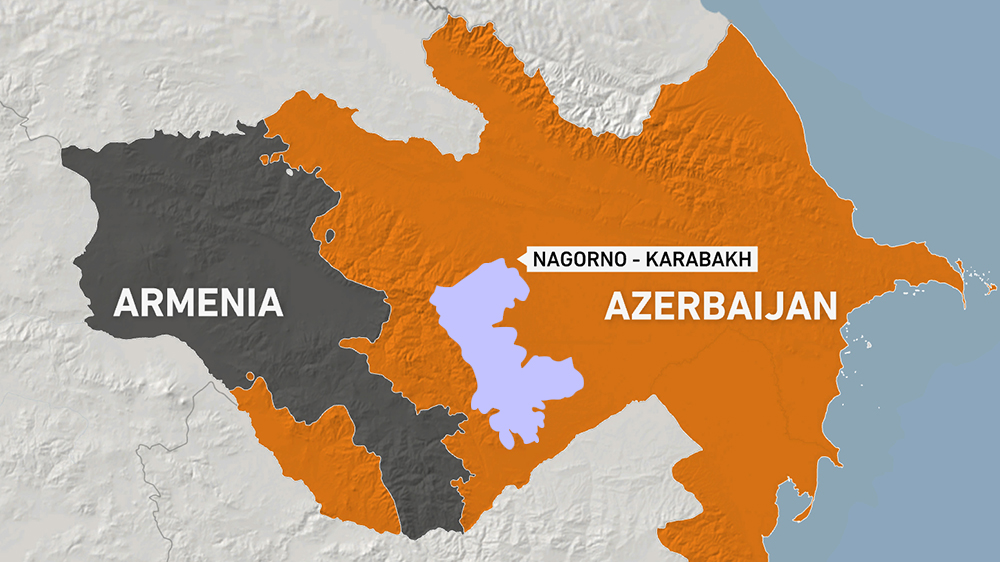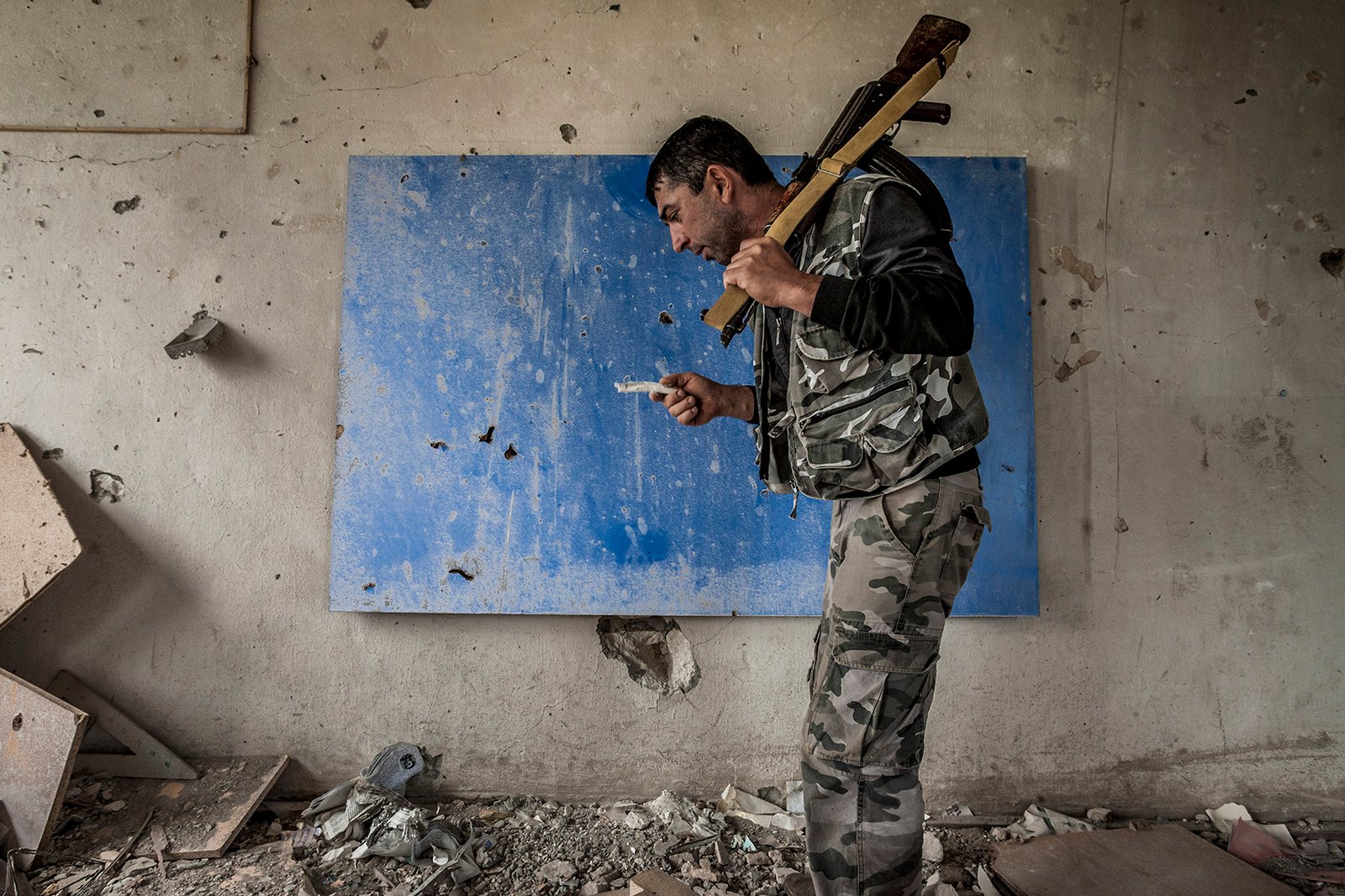Central Asia has once again erupted into flames. Even though things seem to be settling down in Karabakh, the situation, however, is so tense that even the slightest hint of an escalation can turn into yet another full-blown war in a matter of hours.
Since the Soviet era, Nagorno-Karabakh has been a contentious bone between the central Asian neighbours, Azerbaijan and Armenia. Nagorno-Karabakh is a Russian name given to the mountainous region of Karabakh. The conflict that has been going on for the last six weeks and according to Russian sources, close to 5000 people have died while 1,30,000 people have been displaced on both sides of the border.
During the war, Azerbaijan has gained a strategic upper hand over Armenia and its puppet government that controls Nagorno-Karabakh, the Artsakh Republic. The Azers, have either captured or annexed all of their fallen territories from Armenia and Artsakh. While also encapsulating the NGAO (Nagorno-Karabakh Autonomous Oblast) from the rest of Armenia. But how did the people of Nagorno-Karabakh end up here?
The Incessant Bloodbath
The conflict between the Azerbaijan and Armenia on Nagorno-Karabakh goes back to the early 20th century. However, as both countries were not independent and part of the Russian Empire as well as USSR, the issue never saw the light of the day, even though, it was able to spread its shoots in the darkness of ignorance.

It was after the weakening and subsequent collapse of the Soviet Union in the late 1980s that the issue got the steam.
Armenia’s regional parliament voted for the region’s transfer to Armenia; the Soviet authorities turned down the demand. Years of clashes followed between Azerbaijan forces and Armenian separatists. At this point there were three different demands; to make Karabakh a part of Armenia, to let Karabakh a part of Azerbaijan or an independent Nagorno-Karabakh.
The violence lasted into the 1990s, leaving tens and thousands dead and displacing hundreds of thousands. In 1994, Russia brokered a ceasefire, by which time ethnic Armenians had taken control of the region. While the area remains in Azerbaijan, it is today governed by separatist Armenians who have declared it a republic called the “Nagorno-Karabakh Autonomous Oblast”. While the Armenian government does not recognise Nagorno-Karabakh as independent, it supports the region politically and militarily.
Even though the ceasefire was in place, both the nations were ready to beat the tar of each other even at the slightest provocation. Due to such fierce rivalry between the two neighbours, regular ceasefire violations were common. Another four-day was fought in 2016; that ultimately was brokered by, you guessed it, Russia.
The War

The present war started on September 27th. Most of the international watchdogs have stated that it was most likely that Azerbaijan was the instigator; the Azeris deny it.
At first, the war tilted towards the Armenians and the Artsakh due to geographical advantages. However, as the war progressed, Azerbaijan with the help of their superior drone warfare techniques was able to win the war decisively.
For a better perspective, the Azerbaijani side’s casualties were 1/6th of the Armenians, soldiers and equipment included. Additionally, there four attempts of a ceasefire but neither of the sides were ready to bury the hatchet.

The war itself was very different from other wars in the Transcaucasian and middle east region. The war saw the Israelis and Turks were supporting Muslim-majority Azerbaijan while Christian-majority Armenia was being aided by the Iranians. To complicate it more, the Russians were cracking arms deal with both the nations at the same time, talk about monkey benefitting from the fight of two cats.
Many global war analysts have stated that, this 6-week war between the two nations is a shimmering example of the difference machines like drones can make in modern warfare.
The Broken Peace

Azerbaijan won the war decisively and was just 15 kilometres from the capital of Artsakh, Stepanakert. Although, the turning point of the war came in when Shusha, Artsakh’s second-biggest settlement, kneeled to the Azerbaijani forces. It was the fall of Shusha was that forced the Armenian government to sign the peace deal the defeated.
According to CNN Turkey, has taken control over 5 major cities, 4 towns and 240 villages. The captured land, according to The Guardian, is enough to resettle nearly 5 lakh Azeris.
The fact that Azerbaijan gave Armenia a bloody nose was even acknowledged by the Artsakh President Arayik Harutyunyan; he stated that had the war raged on for some days more, the whole of Artsakh would have fallen.
On the 10th of November, a peace deal was brokered between the two adversaries by the Russian Federation. However, it is yet to be seen whether this ceasefire will hold the test of time, as such ceasefires have been broken by both Azerbaijan and Armenia.
According to the peace deal, both the armed forces will retain their captured areas and cease any further military operation. The brokers, Russia, will be sending in a peacekeeping force of around 2000 personnel; who will be stationed in the Karabakh region for another five years, to maintain ‘peace’.
Additionally, all of the area controlled by Armenia around the Artsakh Republic will be ceded to Azerbaijan, while the Armenians will get access to Nagorno-Karabakh via the Lachin Corridor; which will be guarded by the Russians. Apart from the Azerbaijanis will be granted direct access to their territorial enclave, Nakhchivan, west of Armenia via a transport corridor through the Armenian province of Syunik. This corridor too will be guarded by the Russian Armed Forces and its intelligence agency, FSB.
The Anger of the Public
This humiliating loss of Armenia and the subsequent mortifying peace deal, prompted the Armenian public to come out on the streets and protest against the present government, headed by PM Nikol Pashinyan. The exasperation of the Armenians was so much that they stormed their parliament – the National Assembly – and assaulted the speaker Ararat Mirzoyan.
The #unity of #Armenia‘n🇦🇲 nation & the invisible thread connecting every #Armenian person have always been the cornerstones of our rise & rebirth. The #values we bear in our hearts will be the unyielding fundament of #justice & #peace🕊.
📸: haykbaghdasaryan (IG) pic.twitter.com/mjbdimmLAX
— Armenia 🇦🇲 (@armenia) November 16, 2020
On the other hand, the Azerbaijani President Ilham Aliyev, hailed his country’s armed forces and was quick to state that, “Karabakh will be reborn. It will be revived and reinvigorated. It will become a real paradise on earth.” While the people of Azerbaijan were on the streets with their national flags, celebrating their country’s victory over their arch-rivals.
This is where we are now. We have two neighbours who are more than ready to wreak havoc on each other. The Armenians feel that their government has failed to defend what was rightfully theirs. While the Azerbaijanis feel that they have finally taken back what was justly and legitimately theirs.
The feelings of revenge and nationalism are at their zeniths, while the world watches these former Soviet Republics stare each other eye-to-eye with their daggers drawn and prepared to bite the bullet.
Click here to get the latest updates on DU Admissions 2020.
